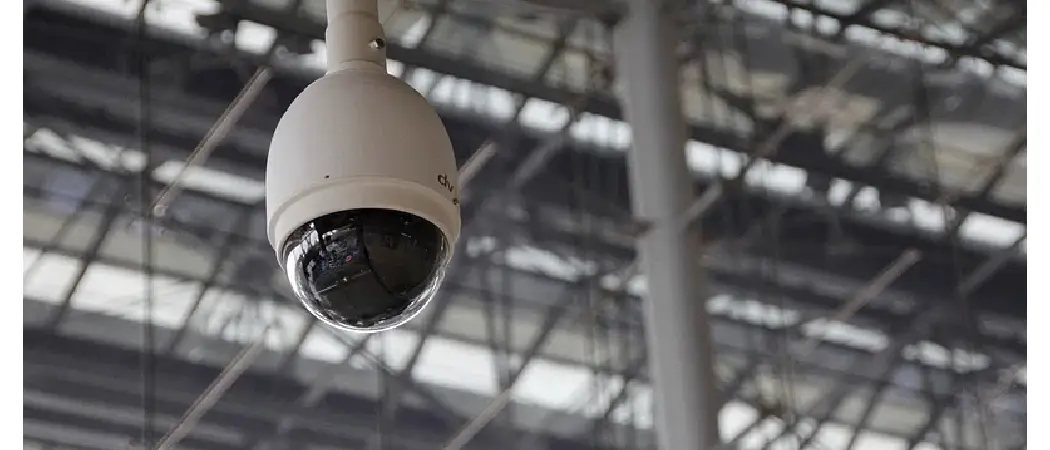Are you looking for reliable ways to protect your home, business, or any place without spending a fortune? If so, jamming CCTV cameras could be the perfect solution. Cramming security camera signals will not only deter intruders but can also ensure that no one has access to confidential information or footage from adjacent rooms and areas.
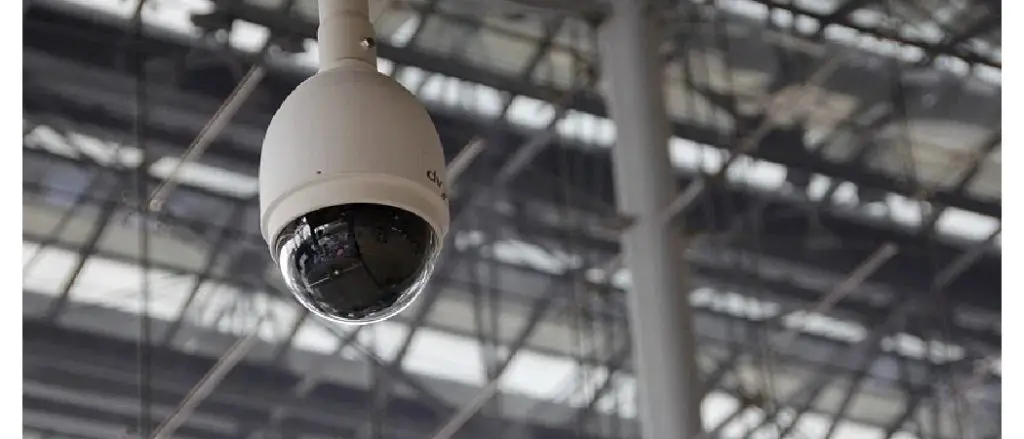
In this blog post, we’ll walk you through all the ways you can effectively jam security cameras to keep your space secure at an affordable rate. Keep reading for some helpful tips on how to jam CCTV cameras!
Why You Need to Jam CCTV Cameras
You might be wondering why you should bother jamming CCTV cameras in the first place. After all, isn’t it illegal to tamper with security devices? While this may be true, there are various situations where jamming CCTV cameras can be necessary and even legal.
For instance, if you suspect that someone is trying to spy on you or invade your privacy by installing hidden cameras, you have the right to jam those devices. Additionally, if you’re hosting a private event or having sensitive discussions in your home or office, you may want to prevent any unauthorized surveillance.
Understanding CCTV Technology
Closed-Circuit Television (CCTV) technology has evolved significantly over the years, leading to a plethora of types and models to choose from, each with their own unique strengths and weaknesses.
Types of CCTV Cameras
CCTV cameras can be broadly classified into wired and wireless models. Wired cameras are connected to the recording and display devices through physical cables, which ensure a stable and high-quality video feed but can be more susceptible to physical tampering. On the other hand, wireless cameras transmit the video feed over Wi-Fi or cellular networks, reducing installation complexity but potentially introducing vulnerabilities from digital interference or hacking.
CCTV systems can also be either analog or digital. Analog systems convert the video signal into a format that can be received by a television, VCR, or analog video monitor, while digital systems convert the video signal into a digital format that can be stored on a computer or other digital storage device. Some cameras also come equipped with night vision capabilities, enabling them to capture video even in low-light conditions using IR technology.
Transmission Methods
The transmission method used by a CCTV camera largely depends on whether it’s wired or wireless. Wired cameras typically use coaxial cable or Ethernet cables to transmit data, while wireless cameras use Wi-Fi or cellular networks. Some newer wireless models also support Power over Ethernet (PoE) which allows them to receive both power and data through a single Ethernet cable.
Frequency of Operation
Different CCTV cameras operate at different frequencies, depending on their transmission method. For example, wired cameras transmit data over a physical cable and thus do not need a specific radio frequency. In contrast, wireless cameras operate on radio frequencies like 2.4 GHz or 5 GHz, which are the standard frequencies for Wi-Fi.
Vulnerability Points
Every CCTV system has potential vulnerability points that could be exploited for jamming purposes. For wired systems, this could be the physical wires – if they are cut or damaged, the video feed will be interrupted. For wireless systems, the vulnerabilities lie in the wireless signals – if these signals are interfered with or jammed, the video feed can be disrupted or even completely blocked.
Things Need to Keep in Mind before Jamming CCTV Cameras
1. Know the Laws and Regulations
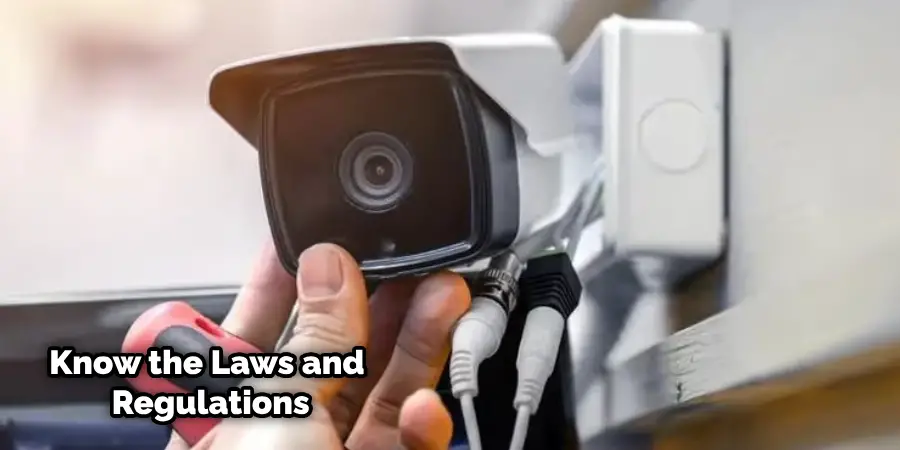
It’s important to research and understand the laws and regulations related to jamming CCTV cameras in your area before taking any action. In some countries, it may be illegal to tamper with security devices, even if it’s for your own safety or privacy. Make sure you’re aware of the potential consequences before proceeding.
2. Choose the Right Jamming Device
There are various types of jamming devices available in the market, and each one serves a different purpose. For CCTV cameras, you’ll need a specific type of device that can block wireless signals within a certain range. Make sure to do your research and select a reliable product from a trusted vendor.
3. Consider the Range and Frequency
When purchasing a jamming device, it’s important to consider the range and frequency of the CCTV cameras you’re trying to block. Some devices may only work on a specific frequency or within a limited range, so make sure to choose one that is compatible with your target security cameras.
4. Use with Caution
Jamming devices should be used with caution and only in situations where it is absolutely necessary. It’s important to remember that these devices can interfere with other wireless signals and may affect the functionality of legitimate devices in the area. Use them responsibly and only when there are no better alternatives.
10 Methods on How to Jam CCTV Cameras
Method 1: Use a Jammer Device
One of the most common and effective ways to jam CCTV cameras is by using a jamming device. These devices emit radio waves that interfere with the camera’s frequency, causing it to lose connection and go offline. However, keep in mind that using jammers may be illegal in some countries, so make sure to check your local laws before purchasing or using one.
Method 2: Use Infrared Light
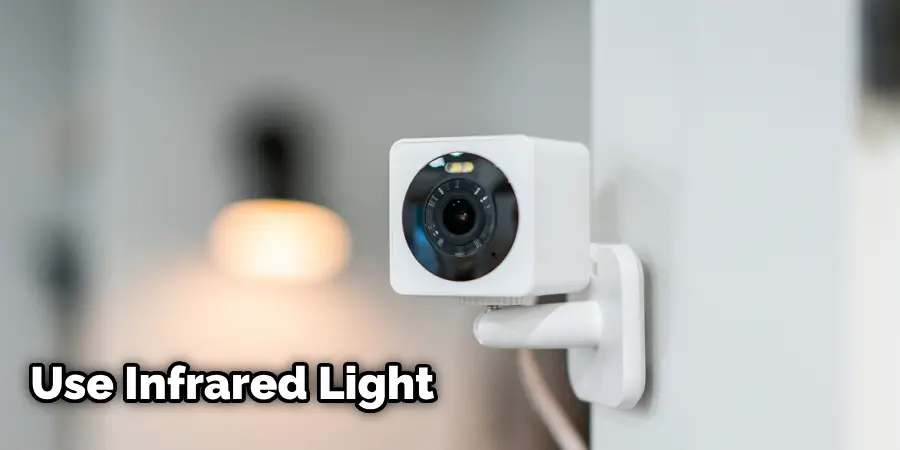
Some CCTV cameras use infrared light to capture images in low-light conditions. You can disrupt this by pointing an infrared light source directly at the camera lens, making it unable to produce clear footage.
Method 3: Cover the Camera Lens
Another simple yet effective way to jam a CCTV camera is by covering its lens with a cloth, tape, or any other opaque material. This will prevent the camera from capturing clear images and make it useless for surveillance.
Method 4: Use Laser Pointers
Similar to infrared light, laser pointers can also interfere with CCTV cameras by shining them directly into the lens. The bright light can overload the camera’s sensor and render its footage unusable.
Method 5: Install a Signal Blocker
Signal blockers work by creating interference with the camera’s wireless signals, making it unable to transmit footage. These devices can be purchased online and are relatively easy to install.
Method 6: Disrupt the Power Source
If you have access to the CCTV camera’s power source, you can simply unplug or cut off its power supply. This will instantly disable the camera and disrupt any surveillance attempts.
Method 7: Create a Faraday Cage
A Faraday cage is an enclosure that blocks external electromagnetic fields, including those used by CCTV cameras. You can create a simple makeshift Faraday cage using aluminum foil or wire mesh to cover the area you want to keep secure.
Method 8: Use a GPS Jammer
If the CCTV camera is equipped with GPS tracking, you can use a GPS jammer to block its signals. This will prevent anyone from using the camera’s location data to track your movements.
Method 9: Hack the Camera System
While not recommended, hacking into the CCTV camera system can also disable or manipulate its functionality. However, this method requires advanced technical knowledge and may be illegal in some cases.
Method 10: Seek Professional Help
If all else fails or if you’re unsure about the legality of jamming CCTV cameras in your area, it’s best to seek professional help. Consulting with a security expert or hiring a professional jammer can ensure that the job is done effectively and within the bounds of the law.
8 Troubleshooting Tips while Jaming CCTV Cameras
1. Ensure Proper Placement
Make sure that your jamming device is placed in an area where it can effectively block the camera’s signals without causing interference with other wireless devices.
2. Check for Compatibility
Before purchasing a jammer, double-check if it’s compatible with the frequency and range of the CCTV cameras you’re trying to jam.
3. Check for Interference
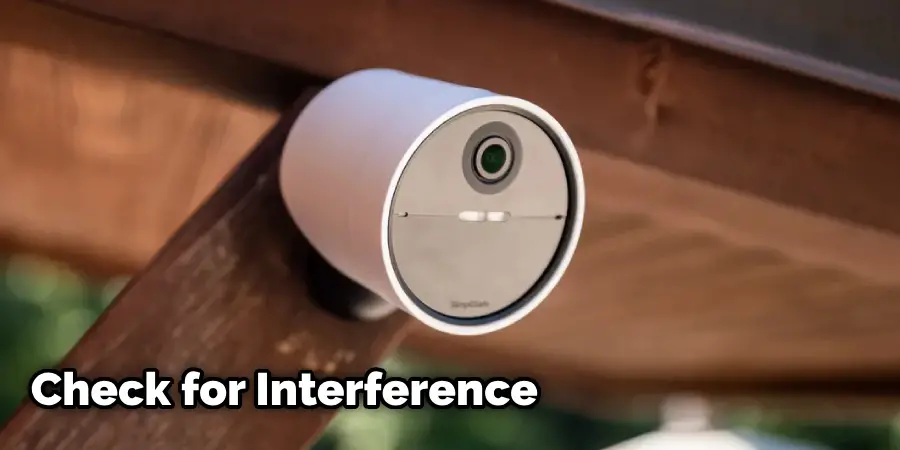
Jamming devices can sometimes interfere with other wireless devices in the area, so make sure to monitor any potential interference and adjust accordingly.
4. Use Multiple Jammers
If one jammer is not enough to effectively block all CCTV cameras in the area, consider using multiple jammers strategically placed around the perimeter.
5. Monitor Battery Levels
If you’re using a portable jammer, make sure to monitor its battery levels and have spare batteries on hand in case it runs out of power.
6. Avoid Detection
Try not to draw attention to yourself while jamming CCTV cameras, as this may lead to unwanted consequences or retaliation from the authorities.
7. Be Mindful of Legal Implications
As mentioned earlier, jamming CCTV cameras may be illegal in some areas. Make sure to do thorough research and understand the potential legal implications before proceeding.
8. Seek Professional Assistance
If you encounter any technical difficulties or have concerns about the legality of jamming CCTV cameras, it’s best to seek professional assistance from a security expert or a licensed jammer provider. They can help troubleshoot any issues and ensure that you are following all necessary laws and regulations.
Overall, it’s important to be responsible and cautious when attempting to jam CCTV cameras, as the consequences can be severe if done illegally or improperly.
The Impact of Technological Advancements on CCTV Discreteness and Privacy
The rapid pace of technological advancements has not only improved the capabilities of CCTV cameras but also their discreteness. Today, surveillance cameras are smaller, more versatile, and more concealed than before. They are often embedded in everyday objects, making them virtually invisible to the naked eye. High-resolution imagery can be captured by cameras as tiny as a button, and powerful lenses can record clear footage even from a distance.
Moreover, advancements in wireless technology and the integration of CCTV systems with the Internet of Things (IoT) have enabled remote monitoring and control, adding a new level of stealth to surveillance practices. Cameras can now stream live footage to a smartphone or a web server, making it possible for someone to be watched without their knowledge or consent.
This increased covert surveillance underscores the importance of staying informed and vigilant about protecting our privacy. As technology continues to evolve, it’s crucial to understand the potential for misuse of these advancements and to take appropriate measures to safeguard our privacy. This may involve staying updated on the latest surveillance technologies, understanding the laws regarding CCTV usage, and adopting countermeasures to protect ourselves from unwarranted invasion of privacy.
Alternatives to Using Jamming Devices
1. Speak to the Owner
If you have concerns about CCTV cameras in your area, consider speaking to the owner or operator of the cameras. They may be willing to adjust their surveillance methods or move the cameras to a less intrusive location.
2. Use Anti-surveillance Techniques
There are various anti-surveillance techniques that can help you avoid being captured by CCTV cameras, such as wearing hats or sunglasses, using disguises, or walking in less populated areas.
3. File a Complaint
If you believe that the CCTV cameras are violating your privacy rights, you can file a complaint with the appropriate authorities or organizations.
4. Use Legal Methods
Instead of jamming CCTV cameras, consider using legal methods to protect your privacy, such as installing your own security cameras or using encryption software to protect sensitive information.
5. Spread Awareness
Educate others about the potential dangers of CCTV surveillance and advocate for stricter regulations on their use. By spreading awareness, you can help protect not only your own privacy but also that of others in your community.
Effectiveness and Limitations of Jamming
Jamming CCTV cameras, as thrilling as it might sound, comes with a host of challenges and limitations. While the process can be effective in temporarily blocking the transmission of signals, it fails to erase any previously recorded footage, leaving a considerable amount of data still accessible to surveillance operators. Furthermore, alternative recording methods, such as wired transmission or local storage, can bypass the jamming process entirely, rendering it ineffective.
Factors Affecting Effectiveness
The effectiveness of jamming largely depends on several factors, such as the type of camera, the transmission method, the strength of the jammer, and surrounding environmental factors. For example, wireless cameras are significantly more susceptible to jamming than their wired counterparts. Similarly, cameras with more robust signal transmission capabilities can resist jamming more effectively than those with weaker signals. The strength and range of the jamming device also play a crucial role, as a weak jammer might not be able to interfere with the signal of a powerful CCTV camera. Moreover, environmental factors such as walls, buildings, and other physical obstacles can impact the signal strength of both the camera and the jammer, potentially reducing the effectiveness of the jamming process.
In response to jamming, camera owners can employ various countermeasures to protect their systems. These might include using wired cameras that are impervious to jamming, deploying anti-jamming software to detect and counteract jamming signals, or incorporating redundant transmission methods to ensure continuous surveillance even in the event of jamming.
Limitations of Jamming
While jamming can temporarily disrupt surveillance, remembering that it does not delete any existing footage is essential. This means that any recorded material before the jamming can still be accessed and used. Moreover, as mentioned earlier, alternative recording methods, such as wired transmission or local storage, can altogether bypass the jamming process.
Another major limitation is the potential for unintended consequences. Jamming devices can interfere with other nearby wireless devices, such as Wi-Fi networks, mobile phones, or even emergency communication systems, leading to potential disruptions or legal consequences. Therefore, while jamming might seem like an appealing solution to evade surveillance, it is crucial to consider its limitations and possible effects on other systems before proceeding.
Legal and Ethical Considerations
As we delve deeper into the world of jamming CCTV cameras, it is crucial to take into account the legal and ethical considerations.
Legality of Jamming
The legality of jamming varies significantly across different countries and regions. While some places may have lax regulations, others have stringent laws against such practices. In many countries, including the US, UK, Australia, and several European nations, use of jamming devices is explicitly prohibited. The reasons for these prohibitions are twofold. First, jamming can cause property damage, i.e., impairing or disabling a CCTV camera, which could lead to criminal charges. Secondly, jamming can cause interference with communications, disrupting not only the CCTV signals but also other nearby wireless networks, potentially even emergency services. This could lead to charges under telecommunication laws, given the potential public safety risks involved.
Ethical Implications
Beyond the legal implications, there are also ethical concerns associated with camera jamming. While the intent might be to secure one’s privacy, the act of jamming could be seen as a violation of another’s right to protect their property or ensure their security. The misuse of jamming devices also poses significant risks. For instance, criminals could use these devices to evade law enforcement or to facilitate illicit activities, further complicated by the fact that jamming indiscriminately affects all nearby devices, not just the target camera.
To navigate this legal and ethical labyrinth, it is encouraged that individuals seek alternative solutions that respect legal boundaries and uphold ethical standards. This might include engaging in open dialogue with CCTV operators, advocating for privacy laws, or using legal protective measures such as encryption for sensitive information. By doing so, it is possible to address privacy concerns without resorting to potentially harmful and illegal methods such as jamming.
Conclusion
In an era of technological advancements, CCTV surveillance has become increasingly pervasive, sophisticated, and discreet, raising significant privacy concerns. While jamming CCTV cameras is one method of counter-surveillance, it is not always legal or ethical. It’s vital to seek professional advice, explore legal avenues, and adopt anti-surveillance techniques to protect one’s privacy.
Furthermore, engaging in open dialogues with camera owners and spreading awareness about surveillance-related issues can contribute to a more privacy-conscious society. As technology continues to evolve, so too must our understanding and management of its implications on privacy. Thanks for reading this article about how to jam CCTV Cameras.

